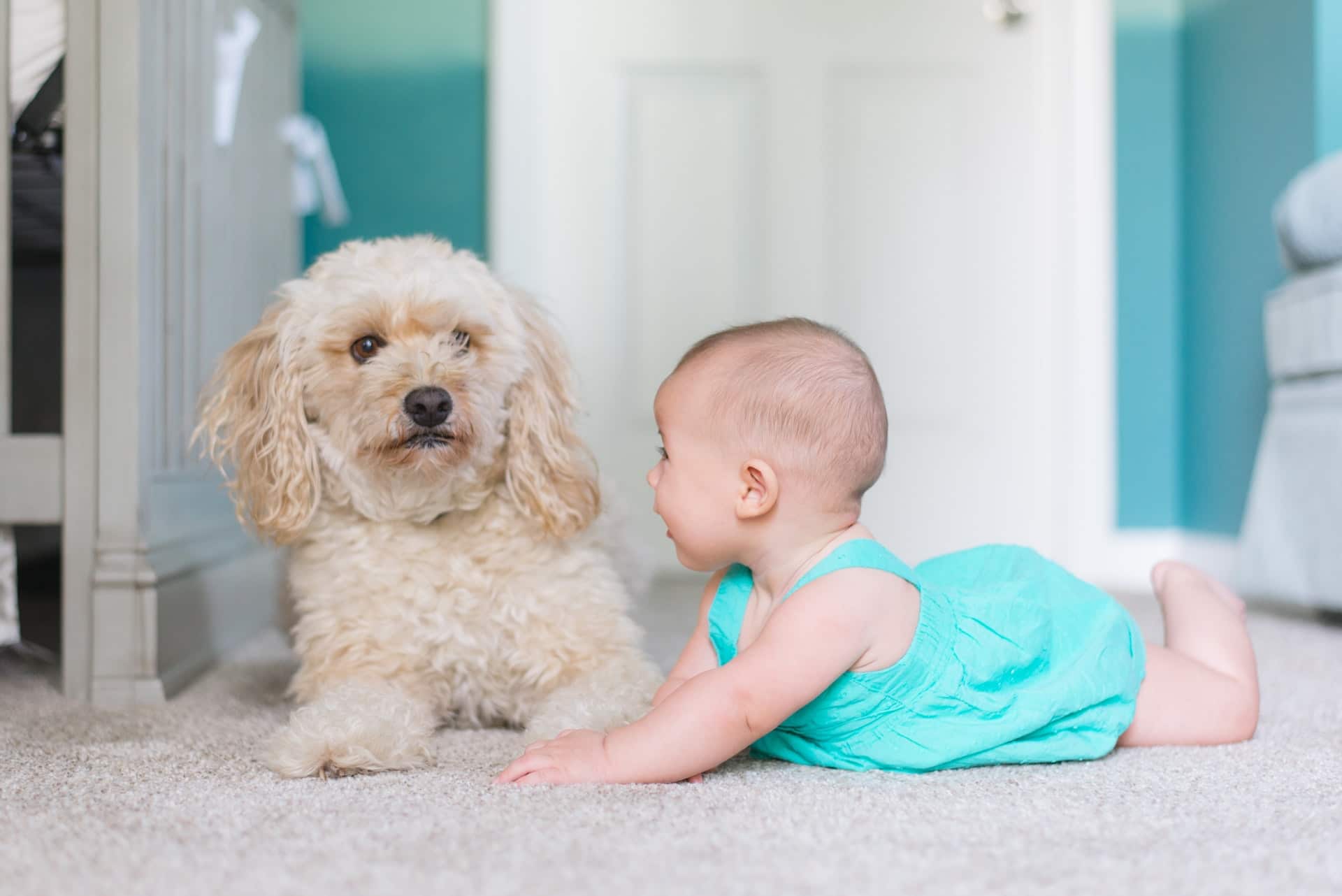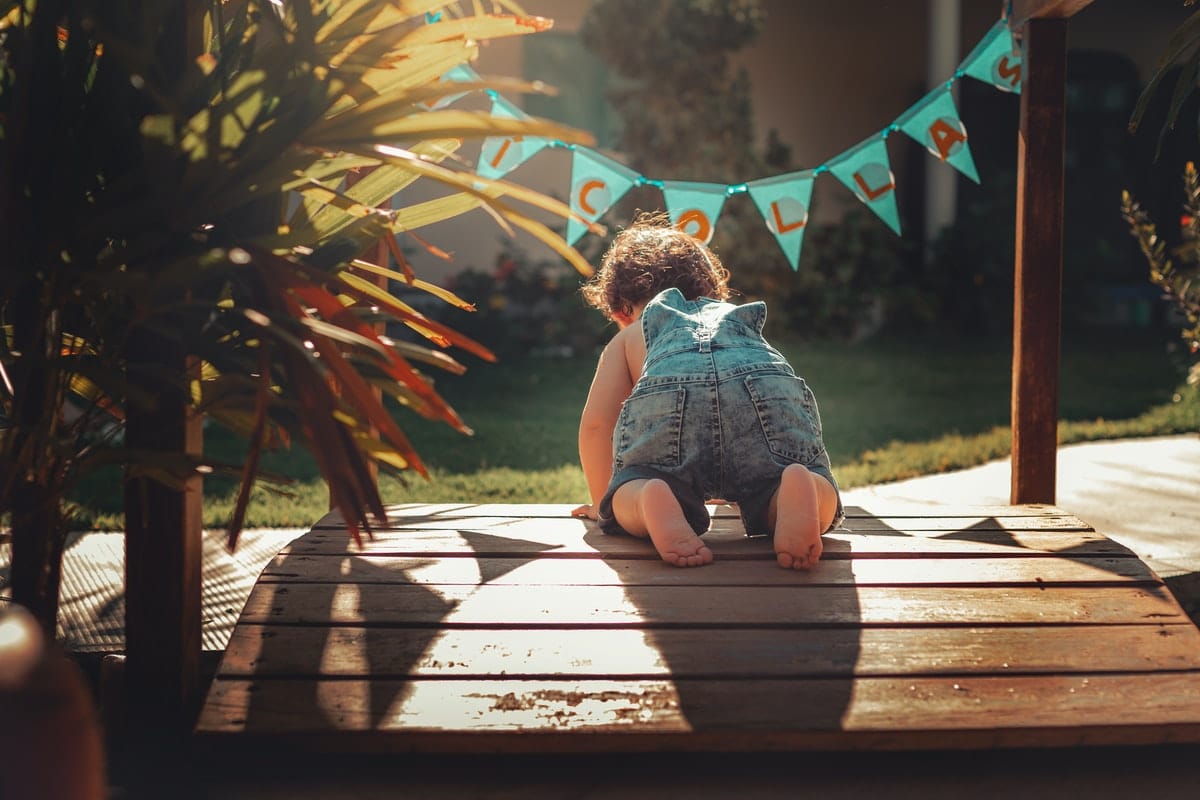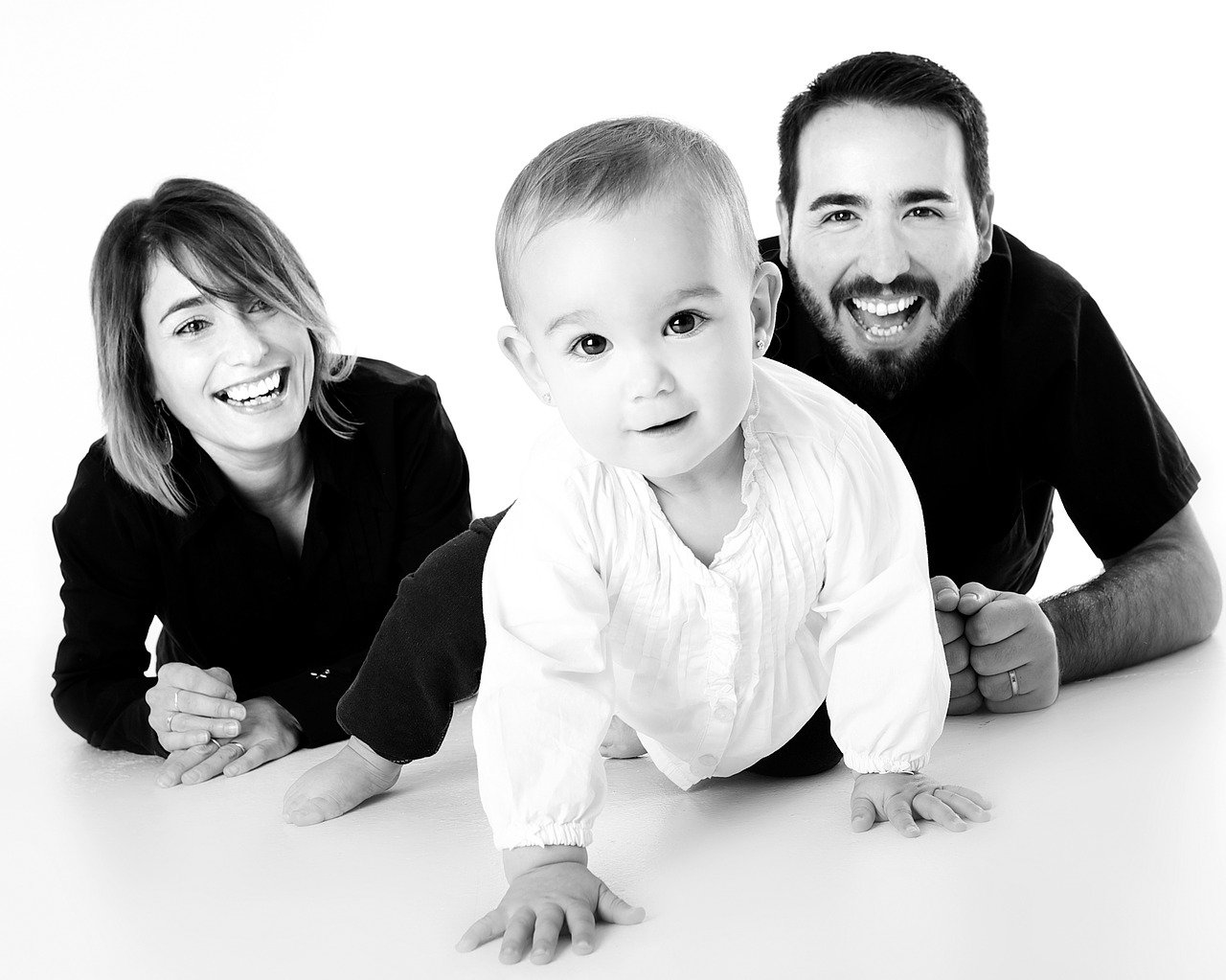Crawling is a milestone for babies. It’s when they finally take their first steps. If you want to know signs baby is ready to crawl, or what baby crawl styles they may have, then this blog post will help!
When expected parents have babies, they start wondering when do babies start crawling? Well, signs baby is ready to crawl are often very subtle. There are some signs that show babies crawl is more likely to start.
One way of knowing when do babies start crawling is by understanding the different types of crawling baby stages and styles. However, some crawling babies skip the crawl stage and move forward directly to walking.
Babies may be more likely to start crawling when they are closer to their first birthday. “Everything you should know about the development, learning and mental stages a toddler will experience between 6 to 8 months”. Their legs become stronger and it becomes easier for them to move around on their knees or all fours.

In This Article
- Signs That Indicate Your baby is ready to crawl
- 1. Starting holding onto different things
- 2. Rocking back and forth
- 3. Pulling themselves up
- 4. Move around on their hands and knees
- 5. Getting into crawling positions
- 6. Trying a cross-legged position
- 7. Moving their feet around
- 8. Try to move around in different positions
- 6 Different Types of Baby Crawling Styles
- 1. Cross-Crawl Style
- 2. Army Crawl Style
- 3. Bear Crawl Style
- 4. Snake Crawl Style
- 5. Crab Crawl Style
- 6. Caterpillar Crawl Style
- 6 Ways to Help Your Baby to Start Crawling
- 1.Provide opportunity
- 2. Tummy time
- 3. Remove supportive devices
- 4. Let the baby play in front of a mirror
- 5. Expose babies to textures
- 6. Provide interesting toys to baby
- What If Baby Isn’t Crawling?
Signs That Indicate Your baby is ready to crawl
When baby crawls, there are several signs to detect that. Parents can look for babies crawl sign, such as crawling on all fours. You may also learn the different types of baby crawling stage and style so you can tell what type your children are using at any given time. Below are the signs parents can look for in their likely to start crawling baby-
1. Starting holding onto different things
Most babies who are ready to crawl try walking around by holding onto coffee table or other things. They do this to help them balance and move around. The baby starts crawling by holding onto different things, such as the kitchen table or other furniture in your home. This is a sign that they are ready to crawl!
Holding different things shows that babies want to move around and explore. They want to start moving on their own, without the help of anyone else holding them up.
It even indicates they are ready is when babies learn how to walk by using a push toy. This shows your baby is becoming more active in general and maybe ready for walk!
2. Rocking back and forth
Babies may also rock themselves before they begin crawling. They will try to figure out a way around the problem of moving from place to place. When babies are ready, they may also hold onto their knees while rocking back and forth. This is another sign that babies crawl are getting closer to start!
Rocking back and forth causes babies to do belly crawl. This is why tummy time is so important for babies! When the baby’s body begins working, crawling will not be too far behind. Your baby learns to start reaching for objects with both arms as well as bringing their legs up towards them.
3. Pulling themselves up
When babies crawl, they try to pull themselves up on objects in their environment. They may do this while standing or holding onto furniture. This is another sign that babies are getting closer to crawling! Pulling up requires a lot of upper body strength, and it’s a significant milestone before they can crawl.
Babies may also pull themselves upon people to stand! They will use you as their jungle gym while you smile back at them with adoring eyes.
4. Move around on their hands and knees
Babies who are ready to crawl may also try moving themselves forward by crawling. They do this while holding onto different objects for support.
This is another sign that babies are getting closer to beginning the process of crawling! Moving hands and knees requires coordination and practice. This will make baby physically more active. It also helps in making shoulder muscles stronger.
Parents can help their babies when they see any difficulty faced by them. The more smooth babies will move and crawl, the faster they will learn.
5. Getting into crawling positions
Babies also try to get into what is called the “crawling position.” They do this by holding onto objects in their environment with one hand while pulling themselves forward. This is another sign babies are ready for crawling!
Different positions that babies may try include: tummy with feet moving, standing on hands and knees while pumping arms forward, moving to crouch position by pushing onto their legs/feet/hands, then rocking back. These are all signs that your baby is ready for the next big milestone in his or her life!
6. Trying a cross-legged position
Babies who start crawling will move their legs around in different positions. They might do this with the support of other objects, such as the dining table or chair.
This is another sign babies are ready to crawl! Cross crawling positions help babies to develop a lot of upper body strength. They will start crawling and walking after they learn this position.
7. Moving their feet around
Many babies who are ready for crawling will also start moving their legs and feet in different ways. They do this while holding things with both hands, which helps babies’ balance. This is another sign of the beginning of the process of crawling!
Moving the feet around is another significant baby’s development in the crawling phase. It helps in making the baby’s legs strong.
8. Try to move around in different positions
Babies who are ready for crawling will start moving in different ways, such as by getting into a “pivot position” and leaning forward. They do this while holding onto objects like the couch or kitchen table with both hands.
They try positions and move forward with the one that they feel is easy and accessible. Above are the signs that are shown in babies crawling age. If your baby is doing these kinds of stuff, then it means they are ready to crawl.

6 Different Types of Baby Crawling Styles
There are babies crawling styles that babies may use when they start to crawl. These include the classic crawl, cross-crawl, army crawl, commando crawl, bear walk, snake crawl, etc. crawling style.
Each of these baby crawling styles is different from each other because babies will do it in their way. This helps them learn how to move around on floors or carpets safely while not putting any pressure on joints like knees and wrists.
Parents can let babies be free to try out all kinds of ways for moving around so they can figure out what works best for them!
Here are descriptions of the six types of baby crawl styles:
1. Cross-Crawl Style
Babies who use this method will keep one arm stationary at their side as they move their opposite leg and arm forward. These babies will use this crawling style when they start to crawl around and may even switch arms every time they move a hand or foot across the floor! With this style, their movements become more flexible and better.
2. Army Crawl Style
Babies who use this crawling style will move their bodies forward by moving one arm and leg on the same side together. These babies may also put a hand down flat as they push themselves along with the other limbs!
Babies keep both arms extended in front of them as they bring each knee up toward their chest. Then extend their legs again before repeating these movements over and over.
3. Bear Crawl Style
Babies who use the bear crawl style will move their bodies forward by moving one arm and leg on opposite sides of their bodies at a time. These babies may also switch which side they’re using to get around after every few steps!
Parents can remove the potential hazards like sharp corners led objects that might be dangerous during the process of babies learning how to crawl safely across surfaces! Babies will use both hands along with either leg or arm – whichever feels more comfortable for these babies at a given time
4. Snake Crawl Style
Babies who use the snake crawl style will move their bodies forward by moving one arm and leg on each side of their bodies at a time. They will use both hands along with either leg or arm – whichever feels more comfortable at a given time.
They even lift their head, chest, and stomach off the floor as they move forward by moving their arms and legs.
5. Crab Crawl Style
Babies who use the crab crawl style will move their body forward by moving both arms and legs simultaneously on opposite sides of their bodies at a time.
Babies begin to lift themselves off the floor with this crawling method! Many parents may notice that babies using this way of crawling tend to push up with their legs as they move one arm, one knee or leg on each side of the body at a time.
6. Caterpillar Crawl Style
Babies who use this crawling style will move their bodies forward by moving both arms and legs simultaneously on the same side of their bodies at a time.
They move an inch forward in this style at a given time! Parents may notice that babies using this way by noticing their movement and speed.

6 Ways to Help Your Baby to Start Crawling
When babies crawling age comes near, parents should help them to initiate the movement. Parents can help babies by making sure they have access to safe surfaces for crawling. Parents should also introduce babies to objects they might want to explore after starting the movement of being able to move forward on their own!
Ways parents can help babies in crawling-
1.Provide opportunity
Parents can help babies learn how to crawl by providing babies with ample opportunities to explore their environment through crawling! Parents can place babies on surfaces such as the floor, bed, or even a changing table to allow them to put pressure on different parts of their bodies.
Parents should provide all sorts of items within reach that babies can hold onto when crawling.
2. Tummy time
Parents should even give babies enough tummy time. Tummy time can help babies develop strength in their tummies, arms, and shoulders – which are all important areas for crawling.
Tummy time also gives babies more space to explore the world around them! One can use developmental milestones to record the crawling phase as well.
3. Remove supportive devices
Parents can help babies learn how to crawl by removing supportive devices such as swings, strollers, and other similar items from the home! Parents should wait until babies can move themselves around on their own before allowing them.
Parents should also make sure babies have ample room to crawl and explore safely! When space will be enough, babies tend to learn faster.
4. Let the baby play in front of a mirror
Parents can allow babies to play in front of a mirror! They may notice that babies will spend more time examining their movements when they can see themselves.
When seeing their reflection, babies try to reach out to the mirror to touch that. This new excitement helps them in doing different movements.
5. Expose babies to textures
Parents can help babies learn how to crawl by exposing them to different surfaces that are textured! Babies love the feeling of crawling on bumpy or textured surfaces.
This gives babies a chance to explore and gain more knowledge about their surroundings. Parents should make sure they expose babies to safe textures.
6. Provide interesting toys to baby
Parents can help babies learn how to crawl by providing them with toys they might want to move towards or try and grab!
Toys will provide babies with an incentive to move towards something. Parents can even place a favorite toy in front of the baby and put tummy time on a floor or bed!
Parents should always keep safety in mind when exposing their children to crawling. They should give them toys that do not have any sharp side.
What If Baby Isn’t Crawling?
If not crawling or showing signs of readiness to crawl, a parent should be encouraging baby in the movement by placing him/her on the floor. They should even place objects that babies might be interested in near them!
Parents can also help their babies learn how to roll over first before they start crawling around. Parents who notice tummy time is difficult for their baby can also help them by placing a pillow under the tummy.
Parents need to remember, however, not to push their babies too hard when learning how to crawl. Babies learn in different ways and at different times. Parents should respect this.
By reading the signs of readiness a parent can help the baby by providing opportunities for exploration through tummy time, playing with the mirror, etc. Doctor consultation is also required for babies if they show any discomfort in crawling.
Endnote!
To conclude, crawling is a new physical milestone for babies, so it requires time. Parents should wait patiently! Babies will crawl when they are ready to move around on their own! Parents should provide them enough time to develop their crawling skills.
Once they will be ready, they will try different crawling positions. If your baby does not crawl at its first year of age, then one can prefer a doctor’s consultation.











